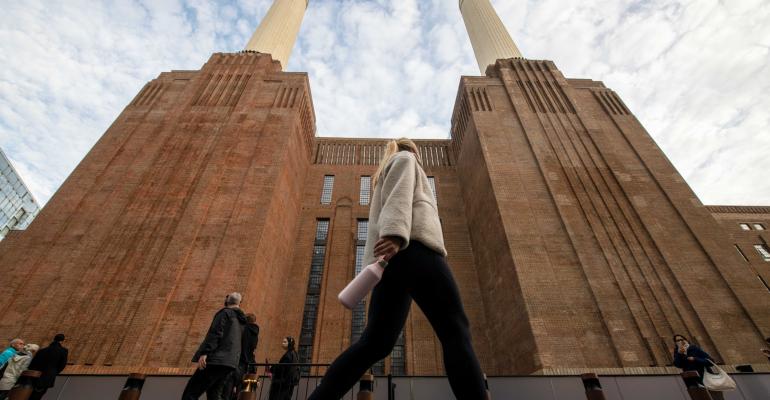(Bloomberg) -- Carbon-dioxide emissions from building construction and operations hit an all-time high in 2021, according to the most recent data, a sign that the push to decarbonize the industry by 2050 may be slipping out of reach. Energy-related emissions from the operation of buildings reached 10 gigatonnes of CO2 equivalent, 5% higher than 2020 levels and 2% more than the pre-pandemic peak in 2019, according to data compiled by the Global Alliance for Buildings and Construction. Operational energy demand in buildings for heating, cooling, lighting and equipment rose about 4% from 2020 levels, the group said.
While investments in building energy efficiency increased 16% last year to $237 billion, the growth in floor space outpaced efficiency efforts. As a result, “the gap between the climate performance of the sector and the 2050 decarbonization pathway is widening,” the report concluded. Buildings were the source of 37% of global CO2 emissions in 2021, which includes emissions derived from the production of concrete, steel, glass and other building materials. Reducing the sector’s emissions has therefore become vital to the larger goal of decarbonizing the global economy. Construction activities in most major economies returned last year to pre-pandemic levels and energy use rose as offices reopened. More emerging economies also increased their use of fossil fuels in buildings. That caused energy demand for buildings to climb about 4% from 2020 levels, the largest advance over the past decade, GlobalABC said.
Cutting emissions from residential buildings holds great promise, but is hard to achieve. “It’s difficult to motivate billions of building owners to take action,” said Adrian Joyce, director of Renovate Europe, a campaign group that wasn’t involved in the GlobalABC report, in an interview. “And, as for politicians, they are reluctant to impose obligations on individual homeowners.”
More countries now include buildings in their climate pledges under the Paris Agreement, which are known as Nationally Determined Contributions, or NDCs. The number of NDCs that mention buildings rose to 158 in 2021 from 88 in 2015, according to the report. However, only 26% of countries have mandatory building energy codes for the buildings sector. Progress is also being hampered by Russia’s war in Ukraine, which has led to higher fuel costs and made everyday life more expensive for millions across the world. Cash-strapped homeowners are reluctant to install expensive heat pumps, revamp insulation or switch to energy-efficient windows without substantial help from governments. “The solution may lie in governments directing relief towards low and zero-carbon building investment activities through financial and non-financial incentives,” said Inger Andersen, executive director of the United Nations Environment Program, in a statement accompanying the report.





